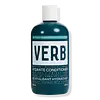What's inside
What's inside
 Key Ingredients
Key Ingredients

 Benefits
Benefits

 Concerns
Concerns

 Ingredients Side-by-side
Ingredients Side-by-side

Water
Skin ConditioningCetyl Alcohol
EmollientStearyl Alcohol
EmollientMelaleuca Alternifolia Leaf Oil
AntioxidantMentha Piperita Oil
MaskingRosmarinus Officinalis Leaf Extract
AntimicrobialMenthol
MaskingEucalyptus Globulus Leaf Oil
PerfumingAloe Barbadensis Leaf Juice
Skin ConditioningLavandula Angustifolia Flower/Leaf/Stem Extract
MaskingPropanediol
SolventSalvia Officinalis Leaf Extract
CleansingChamomilla Recutita Flower Extract
MaskingThymus Vulgaris Extract
PerfumingParfum
MaskingPhenoxyethanol
PreservativePanthenol
Skin ConditioningCetrimonium Bromide
AntimicrobialEthylhexylglycerin
Skin ConditioningWater, Cetyl Alcohol, Stearyl Alcohol, Melaleuca Alternifolia Leaf Oil, Mentha Piperita Oil, Rosmarinus Officinalis Leaf Extract, Menthol, Eucalyptus Globulus Leaf Oil, Aloe Barbadensis Leaf Juice, Lavandula Angustifolia Flower/Leaf/Stem Extract, Propanediol, Salvia Officinalis Leaf Extract, Chamomilla Recutita Flower Extract, Thymus Vulgaris Extract, Parfum, Phenoxyethanol, Panthenol, Cetrimonium Bromide, Ethylhexylglycerin
Behentrimonium Methosulfate
Cetearyl Alcohol
EmollientIsopropyl Palmitate
EmollientPyrus Malus Fruit Extract
Skin ConditioningArgania Spinosa Kernel Oil
EmollientOrbignya Oleifera Seed Oil
EmollientCeramide NP
Skin ConditioningSqualane
EmollientEthylhexyl Olivate
Skin ConditioningPanthenol
Skin ConditioningEthylhexylglycerin
Skin ConditioningGlycerin
HumectantLauryl/Myristyl Polyricinoleate
EmollientC11-13 Isoparaffin
SolventPolyquaternium-37
Propylene Glycol Dicaprylate/Dicaprate
EmollientTrisodium Ethylenediamine Disuccinate
Guar Hydroxypropyltrimonium Chloride
Skin ConditioningCetrimonium Chloride
AntimicrobialSteartrimonium Chloride
PreservativePPG-1 Trideceth-6
Skin ConditioningCitric Acid
BufferingParfum
MaskingIsopropyl Alcohol
SolventMyristyl Alcohol
EmollientArachidyl Alcohol
EmollientSodium Benzoate
MaskingPhenoxyethanol
PreservativeBenzyl Salicylate
PerfumingBehentrimonium Methosulfate, Cetearyl Alcohol, Isopropyl Palmitate, Pyrus Malus Fruit Extract, Argania Spinosa Kernel Oil, Orbignya Oleifera Seed Oil, Ceramide NP, Squalane, Ethylhexyl Olivate, Panthenol, Ethylhexylglycerin, Glycerin, Lauryl/Myristyl Polyricinoleate, C11-13 Isoparaffin, Polyquaternium-37, Propylene Glycol Dicaprylate/Dicaprate, Trisodium Ethylenediamine Disuccinate, Guar Hydroxypropyltrimonium Chloride, Cetrimonium Chloride, Steartrimonium Chloride, PPG-1 Trideceth-6, Citric Acid, Parfum, Isopropyl Alcohol, Myristyl Alcohol, Arachidyl Alcohol, Sodium Benzoate, Phenoxyethanol, Benzyl Salicylate
 Reviews
Reviews

Ingredients Explained
These ingredients are found in both products.
Ingredients higher up in an ingredient list are typically present in a larger amount.
Ethylhexylglycerin (we can't pronounce this either) is commonly used as a preservative and skin softener. It is derived from glyceryl.
You might see Ethylhexylglycerin often paired with other preservatives such as phenoxyethanol. Ethylhexylglycerin has been found to increase the effectiveness of these other preservatives.
Panthenol is a common ingredient that helps hydrate and soothe the skin. It is found naturally in our skin and hair.
There are two forms of panthenol: D and L.
D-panthenol is also known as dexpanthenol. Most cosmetics use dexpanthenol or a mixture of D and L-panthenol.
Panthenol is famous due to its ability to go deeper into the skin's layers. Using this ingredient has numerous pros (and no cons):
Like hyaluronic acid, panthenol is a humectant. Humectants are able to bind and hold large amounts of water to keep skin hydrated.
This ingredient works well for wound healing. It works by increasing tissue in the wound and helps close open wounds.
Once oxidized, panthenol converts to pantothenic acid. Panthothenic acid is found in all living cells.
This ingredient is also referred to as pro-vitamin B5.
Learn more about PanthenolParfum is a catch-all term for an ingredient or more that is used to give a scent to products.
Also called "fragrance", this ingredient can be a blend of hundreds of chemicals or plant oils. This means every product with "fragrance" or "parfum" in the ingredients list is a different mixture.
For instance, Habanolide is a proprietary trade name for a specific aroma chemical. When used as a fragrance ingredient in cosmetics, most aroma chemicals fall under the broad labeling category of “FRAGRANCE” or “PARFUM” according to EU and US regulations.
The term 'parfum' or 'fragrance' is not regulated in many countries. In many cases, it is up to the brand to define this term.
For instance, many brands choose to label themselves as "fragrance-free" because they are not using synthetic fragrances. However, their products may still contain ingredients such as essential oils that are considered a fragrance by INCI standards.
One example is Calendula flower extract. Calendula is an essential oil that still imparts a scent or 'fragrance'.
Depending on the blend, the ingredients in the mixture can cause allergies and sensitivities on the skin. Some ingredients that are known EU allergens include linalool and citronellol.
Parfum can also be used to mask or cover an unpleasant scent.
The bottom line is: not all fragrances/parfum/ingredients are created equally. If you are worried about fragrances, we recommend taking a closer look at an ingredient. And of course, we always recommend speaking with a professional.
Learn more about ParfumPhenoxyethanol is a preservative that has germicide, antimicrobial, and aromatic properties. Studies show that phenoxyethanol can prevent microbial growth. By itself, it has a scent that is similar to that of a rose.
It's often used in formulations along with Caprylyl Glycol to preserve the shelf life of products.